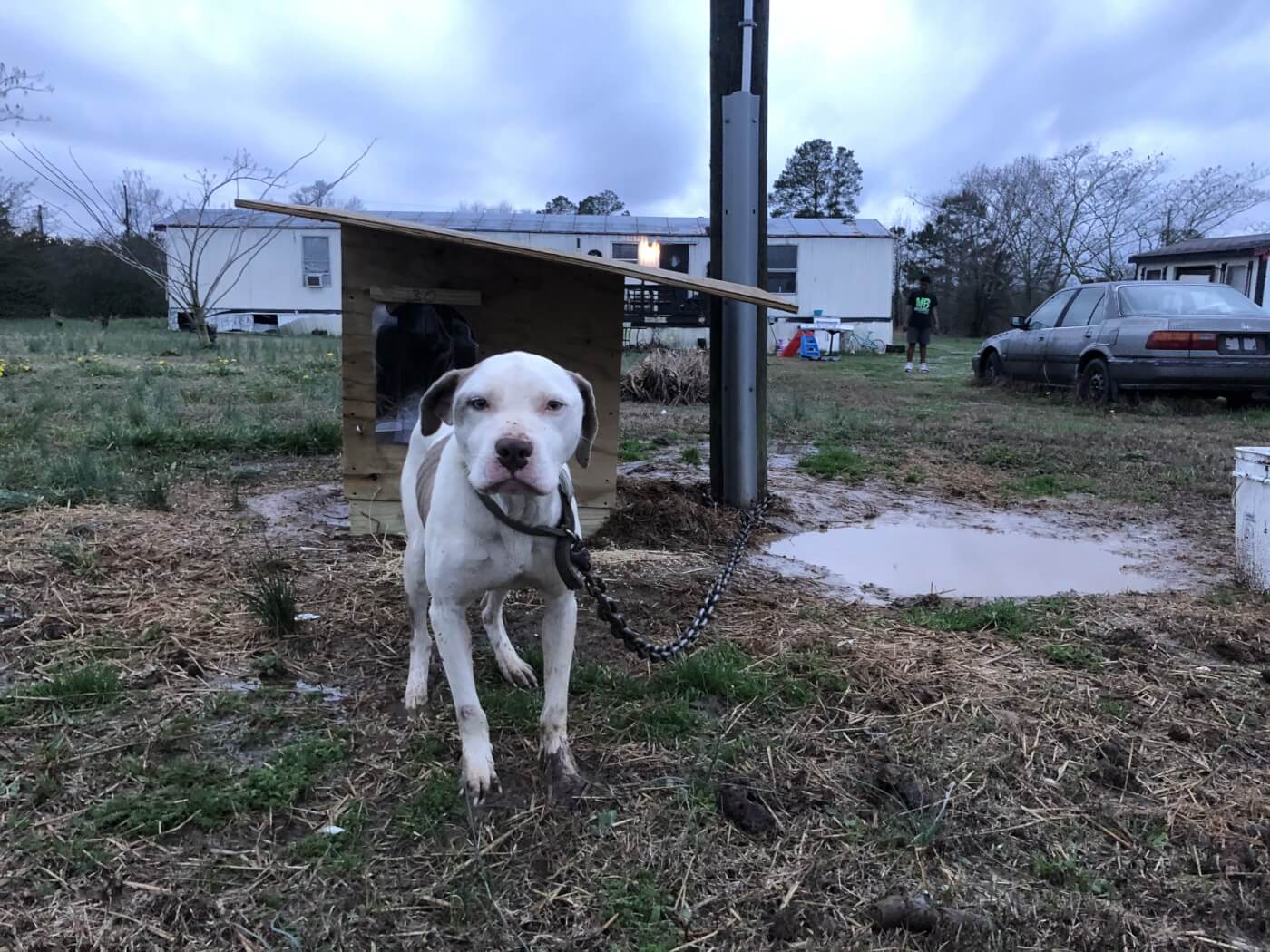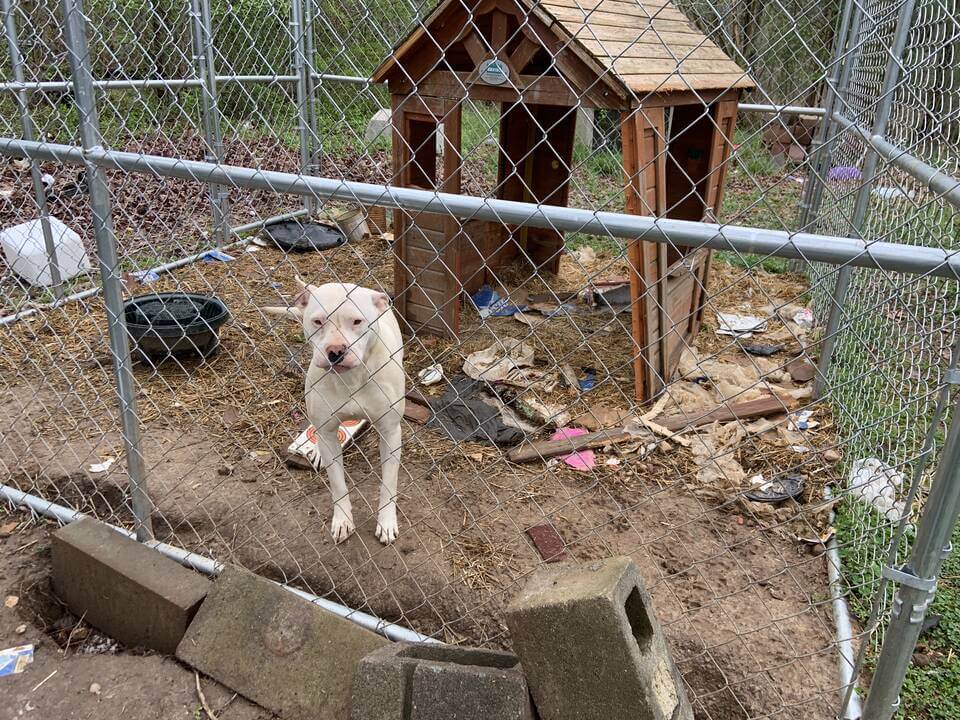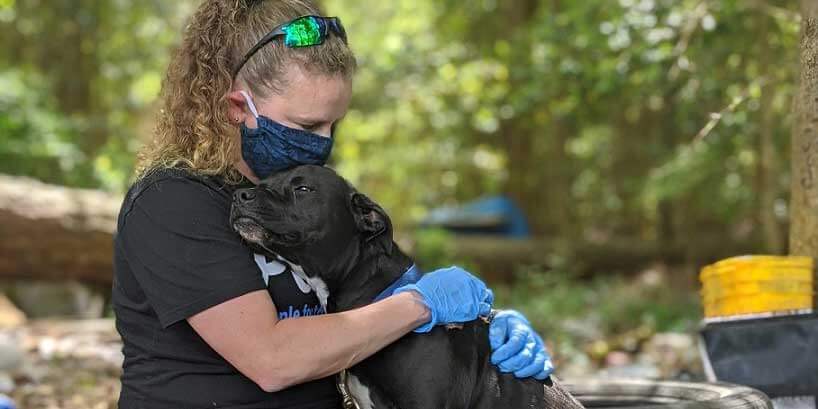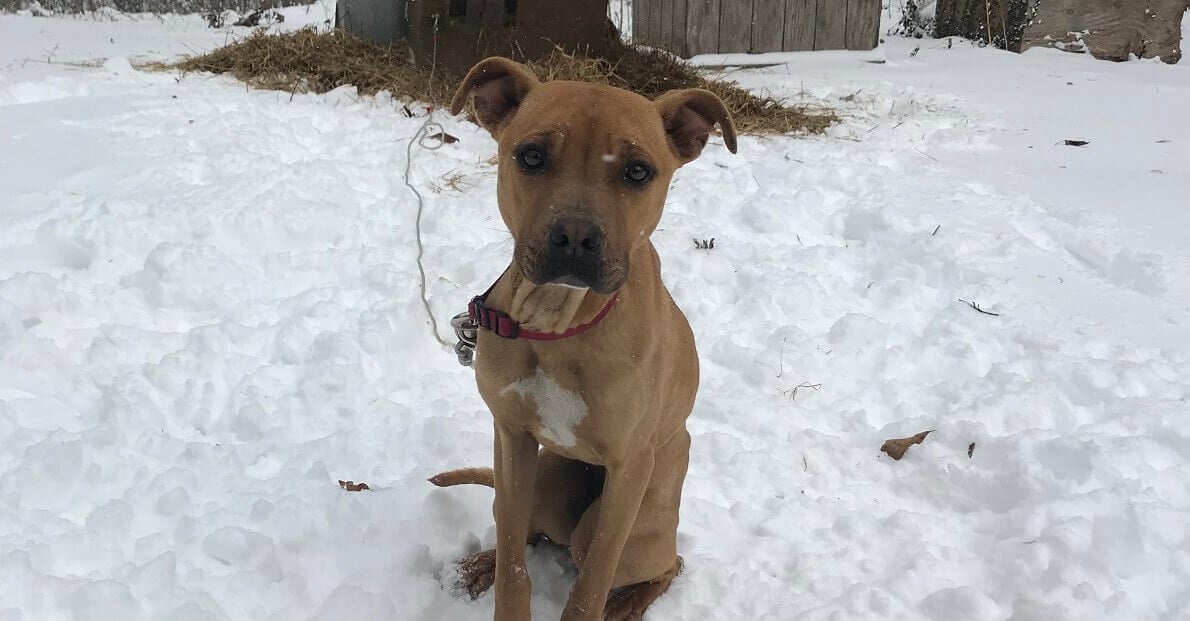‘Breaking the Chain’ Started a Movement—Help Dogs in Your Neighborhood
The acclaimed documentary Breaking the Chain exposes the nationwide crisis of neglected and abused dogs languishing on chains and inside pens—and reveals the power of a small group of people who make a world of difference for them. You can watch it right now on Prime Video.
You don’t have to stop at watching the film—you, too, can take action for animals suffering in backyards in your own neighborhood! Here’s how to get started:
Watch Breaking the Chain
Available on numerous streaming platforms, the documentary will not only open your eyes to the all-too-common plight of dogs like Edith and Zena but also inspire you to help dogs in your own community.
Research Laws and Cases in Your Area
So what can you do if you spot a dog kept chained or penned outside 24/7? Every state has laws pertaining to standards of care, cruelty, and neglect. Familiarize yourself with local and state laws, and check to see if there are any tethering bans in your region. However, even if there are laws on the books, they’re not necessarily enforced and your local law-enforcement entity may not be aware of the individual dogs you’re concerned about.
Gather Information
It’s perfectly fine to knock on someone’s door and talk with them or leave them a note with your information, but you shouldn’t walk around private property without the owner’s permission. However, dogs and their living conditions may be visible from the street, the sidewalk, the neighbor’s yard (if the neighbor allows you access), etc. You can take photos or video footage of what you observe from those vantage points, and having visuals could be a huge help if you file a complaint. Carefully note what you see, keeping the following in mind.
- Location: Record the address, and accurately describe the location and description of the home if there is no visible house number. Note the temperature at the time, too.
- Description of animal: If you can tell the dog’s breed, approximate age, size, and sex, record that information, too.
- Dog’s health: If the situation appears dire (for instance, if the dog is downed or hunched over or has difficulty breathing or walking), don’t hesitate to call 911.
Look for Shelter
Note whether the dog is tethered, chained, penned, or loose as well as whether they have access to adequate shelter. A doghouse should have four walls, a raised floor, a solid roof, and an opening covered by a flap in the winter, and it must be waterproof. It should be small enough that the dog’s own body heat can help provide some warmth but large enough to allow for standing up, turning around, and lying down comfortably.
If the only accessible shelter is an airline carrier, a wire crate, a barrel, or something else that collects water, ices up, or lets the cold and wind in—or if the dog has no shelter at all—that is not adequate and could be very serious, especially during bad weather.
Look for Food and Water
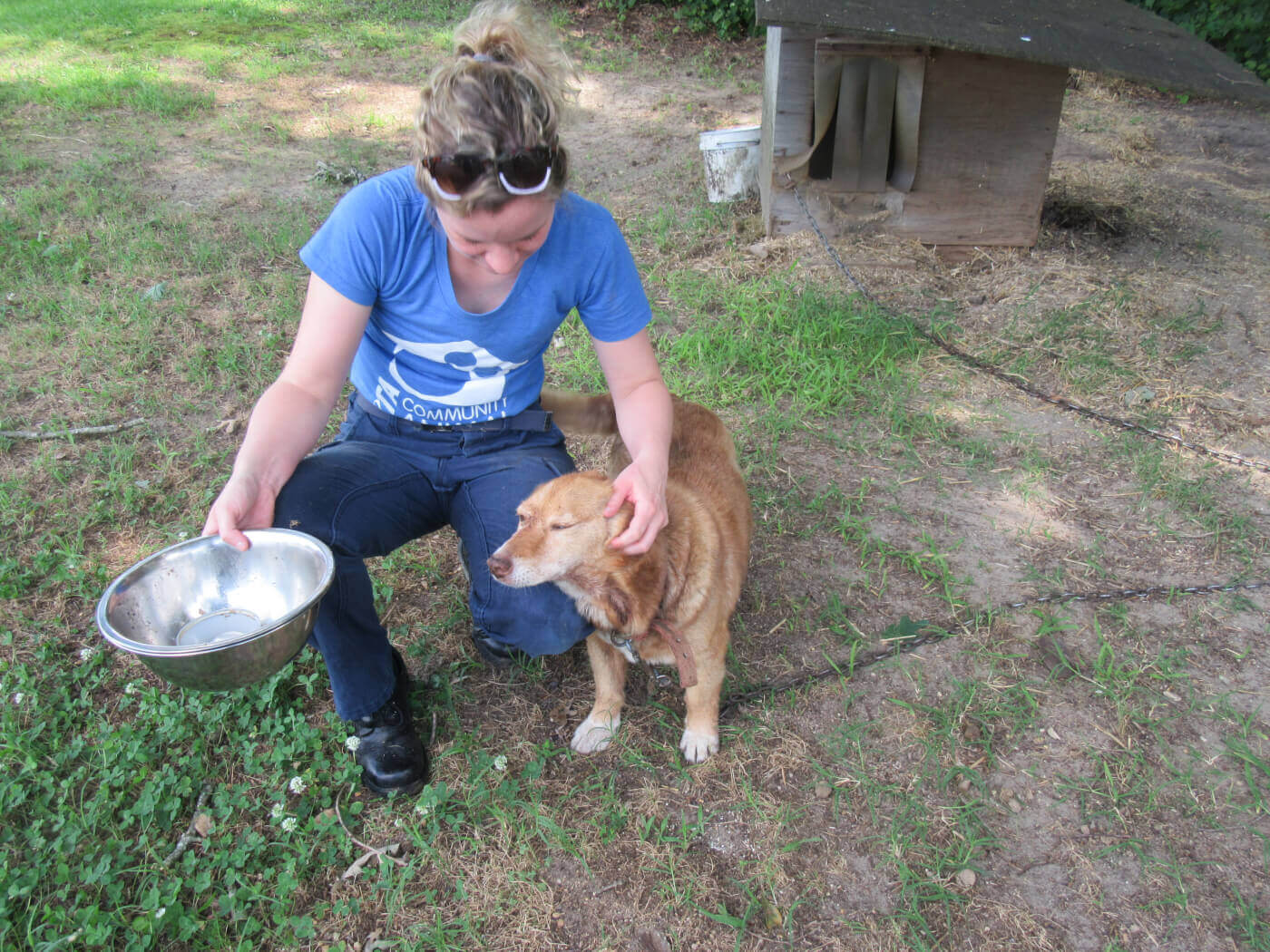
Try to see if there are any buckets or bowls of food and water. If the water is frozen in the winter or there’s none at all, take action, as described in the next steps. If the dog seems underweight (with ribs, spine, or hipbones showing), look for any evidence of food and fecal matter.
Talk to the Owner
Knock on the door, and be very polite. If applicable, mention that it’s cold out and say that you were wondering if the owner would let the dog, who appears to be shivering, in the house. In warmer months, let the owners know how dangerous sweltering heat is for dogs exposed to the elements. If the owner is worried that the dog would make a mess indoors or gives another excuse, suggest allowing the animal to stay overnight in the laundry room, a bathroom, or even a heated garage—anywhere warm.
If the owner refuses to allow the dog indoors, politely ask for permission to help. Ask if you can provide the dog with fresh water, food, and/or straw bedding. Emphasize that this will all be free of charge—you just love dogs and would like to help.
Call the Authorities
If the owner won’t let the dog indoors or allow you to help, be polite, leave the property, and call local animal control. If the agency is unresponsive or closed, call the local police or sheriff. Clearly describe the conditions for the animal, saying that the dog has no access to water or shelter (or whatever is accurate) and needs to be taken indoors or provided with adequate protection and care as required by law.
Be calm, firm, polite, and precise, and mention the temperature. Carefully note the time that you called and the name of the person you spoke with. If the dog has no shelter or is sick or injured, stay there until an officer arrives. Remember that your involvement could mean the difference between life and death.
Work to Get a Tethering Ban Passed to Outlaw Chaining Dogs
The best way to prevent dogs from suffering and dying on chains is to get a tethering ban passed.
PETA has everything you need to convince your local officials that chaining should be outlawed. Please contact us for materials to hand out at council and commissioner meetings or to put in packets to inform people about the nationwide crisis of animal neglect. Print literature from PETA detailing why chaining dogs creates unsafe neighborhoods, and hand out copies in your community. Click here for more information on getting a tethering ban.


